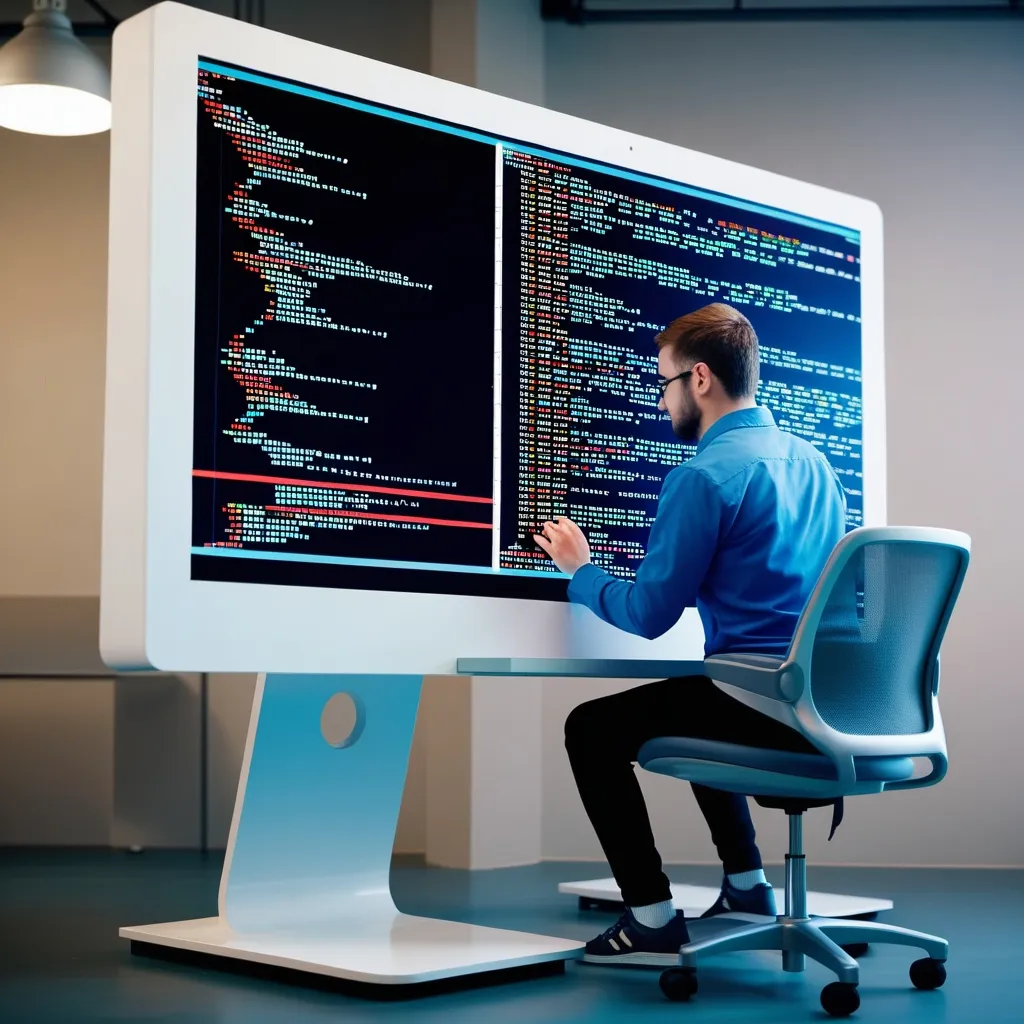WebGPU is changing the game for web developers like me. It’s giving our browsers superpowers, letting us tap into GPU capabilities we could only dream of before. I’ve been exploring this tech, and it’s opening up a world of possibilities for high-performance graphics and complex computations right in our web apps.
What makes WebGPU special is how it talks to the GPU. It’s not just an upgrade from WebGL - it’s a whole new approach. I can now write code that runs blazingly fast, whether I’m rendering intricate 3D scenes or crunching massive datasets.
Let me walk you through how it works. At its core, WebGPU uses a pipeline architecture. This means I set up a series of steps for my graphics or compute operations, and the GPU executes them efficiently. Here’s a basic example of how I might set up a render pipeline:
const pipeline = device.createRenderPipeline({
layout: 'auto',
vertex: {
module: device.createShaderModule({
code: vertexShaderCode
}),
entryPoint: 'main'
},
fragment: {
module: device.createShaderModule({
code: fragmentShaderCode
}),
entryPoint: 'main',
targets: [{
format: format
}]
},
primitive: {
topology: 'triangle-list'
}
});
This pipeline defines how my vertices will be processed and how the resulting fragments will be colored. The real magic happens in the shaders, though. WebGPU introduces a new shader language called WGSL (WebGPU Shading Language). It’s designed to be efficient and easy to use. Here’s a simple vertex shader in WGSL:
struct VertexOutput {
@builtin(position) position: vec4<f32>,
@location(0) color: vec4<f32>
};
@vertex
fn main(@location(0) position: vec3<f32>,
@location(1) color: vec3<f32>) -> VertexOutput {
var output: VertexOutput;
output.position = vec4<f32>(position, 1.0);
output.color = vec4<f32>(color, 1.0);
return output;
}
This shader takes in a position and color for each vertex, and outputs them for the fragment shader to use. It’s straightforward, but powerful.
One of the things I love about WebGPU is how it handles memory. I can create buffers and textures that live on the GPU, which makes data transfer much faster. Here’s how I might create a buffer:
const buffer = device.createBuffer({
size: 16,
usage: GPUBufferUsage.UNIFORM | GPUBufferUsage.COPY_DST
});
This buffer can be used for uniform data in my shaders, and I can update it from the CPU when needed.
But WebGPU isn’t just about graphics. It’s also great for compute tasks. I can write compute shaders that run in parallel on the GPU, which is perfect for things like physics simulations or image processing. Here’s a simple compute shader that adds two arrays:
@group(0) @binding(0) var<storage, read> a: array<f32>;
@group(0) @binding(1) var<storage, read> b: array<f32>;
@group(0) @binding(2) var<storage, read_write> result: array<f32>;
@compute @workgroup_size(64)
fn main(@builtin(global_invocation_id) global_id: vec3<u32>) {
let index = global_id.x;
result[index] = a[index] + b[index];
}
To use this, I’d set up a compute pipeline and dispatch the work:
const computePipeline = device.createComputePipeline({
layout: 'auto',
compute: {
module: device.createShaderModule({
code: computeShaderCode
}),
entryPoint: 'main'
}
});
const commandEncoder = device.createCommandEncoder();
const passEncoder = commandEncoder.beginComputePass();
passEncoder.setPipeline(computePipeline);
passEncoder.setBindGroup(0, bindGroup);
passEncoder.dispatchWorkgroups(Math.ceil(arraySize / 64));
passEncoder.end();
device.queue.submit([commandEncoder.finish()]);
This setup allows me to process large amounts of data in parallel, which can be much faster than doing it on the CPU.
One of the coolest things about WebGPU is how it lets me do multi-pass rendering. I can render to one or more textures, then use those textures in subsequent passes. This is great for advanced effects like shadow mapping or deferred rendering. Here’s a snippet of how I might set up a render pass that renders to a texture:
const textureDesc = {
size: [640, 480],
format: 'rgba8unorm',
usage: GPUTextureUsage.RENDER_ATTACHMENT | GPUTextureUsage.TEXTURE_BINDING
};
const texture = device.createTexture(textureDesc);
const renderPassDescriptor = {
colorAttachments: [{
view: texture.createView(),
loadOp: 'clear',
storeOp: 'store',
clearValue: [0, 0, 0, 1]
}]
};
const commandEncoder = device.createCommandEncoder();
const passEncoder = commandEncoder.beginRenderPass(renderPassDescriptor);
// Render scene here
passEncoder.end();
device.queue.submit([commandEncoder.finish()]);
This texture can then be used as an input to another render pass or a compute shader.
WebGPU also gives me fine-grained control over how my GPU resources are used. I can create bind groups that define how my shaders access buffers and textures:
const bindGroup = device.createBindGroup({
layout: pipeline.getBindGroupLayout(0),
entries: [
{ binding: 0, resource: { buffer: uniformBuffer }},
{ binding: 1, resource: sampler },
{ binding: 2, resource: texture.createView() }
]
});
This setup allows for efficient resource management and helps the GPU optimize its operations.
I’ve found that optimizing for WebGPU often involves thinking differently about my rendering and compute tasks. Instead of sending lots of draw calls, I try to batch my work into fewer, larger operations. I also try to keep data on the GPU as much as possible, only transferring what’s absolutely necessary between the CPU and GPU.
One technique I’ve been using is instanced rendering. This allows me to draw many similar objects with a single draw call. Here’s how I might set up instanced rendering:
const instanceBuffer = device.createBuffer({
size: instanceData.byteLength,
usage: GPUBufferUsage.VERTEX | GPUBufferUsage.COPY_DST,
mappedAtCreation: true
});
new Float32Array(instanceBuffer.getMappedRange()).set(instanceData);
instanceBuffer.unmap();
const renderPipeline = device.createRenderPipeline({
// ... other pipeline settings ...
vertex: {
module: device.createShaderModule({ code: vertexShaderCode }),
entryPoint: 'main',
buffers: [
{
arrayStride: 3 * 4,
attributes: [{ shaderLocation: 0, offset: 0, format: 'float32x3' }]
},
{
arrayStride: 4 * 4,
stepMode: 'instance',
attributes: [{ shaderLocation: 1, offset: 0, format: 'float32x4' }]
}
]
}
});
// In render pass
passEncoder.setVertexBuffer(0, vertexBuffer);
passEncoder.setVertexBuffer(1, instanceBuffer);
passEncoder.draw(vertexCount, instanceCount);
This allows me to render many objects efficiently, which is great for things like particle systems or large scenes with many similar objects.
WebGPU is still evolving, and I’m excited to see what new features and optimizations will come. It’s already enabling web applications that I never thought possible in a browser. From complex 3D visualizations to machine learning models running in real-time, the possibilities are endless.
As I continue to explore WebGPU, I’m constantly amazed by its capabilities. It’s not just about making things faster or prettier - it’s about enabling entirely new classes of web applications. I’m looking forward to seeing how developers push the boundaries of what’s possible with this technology.






